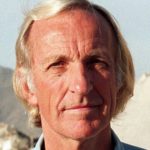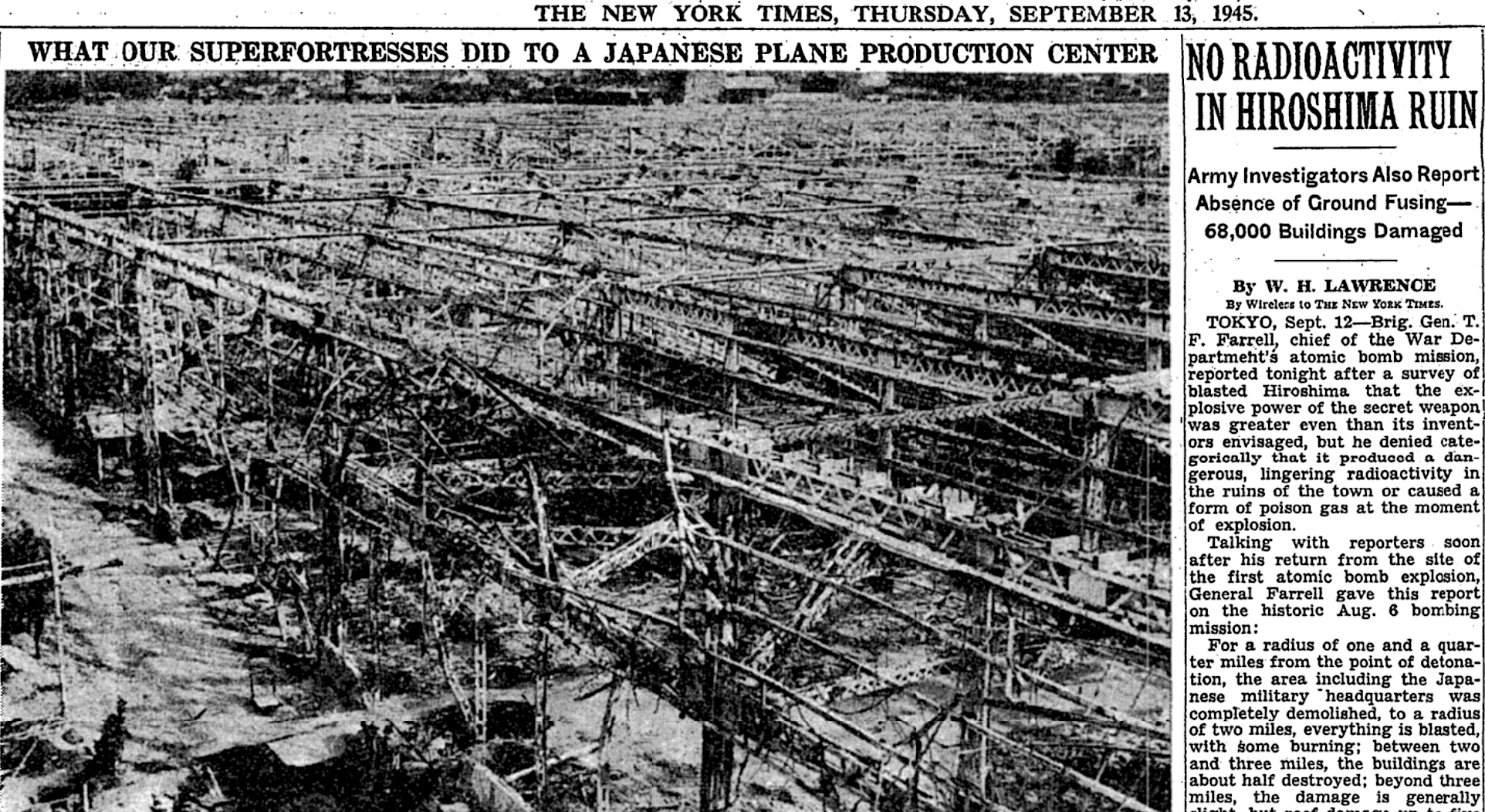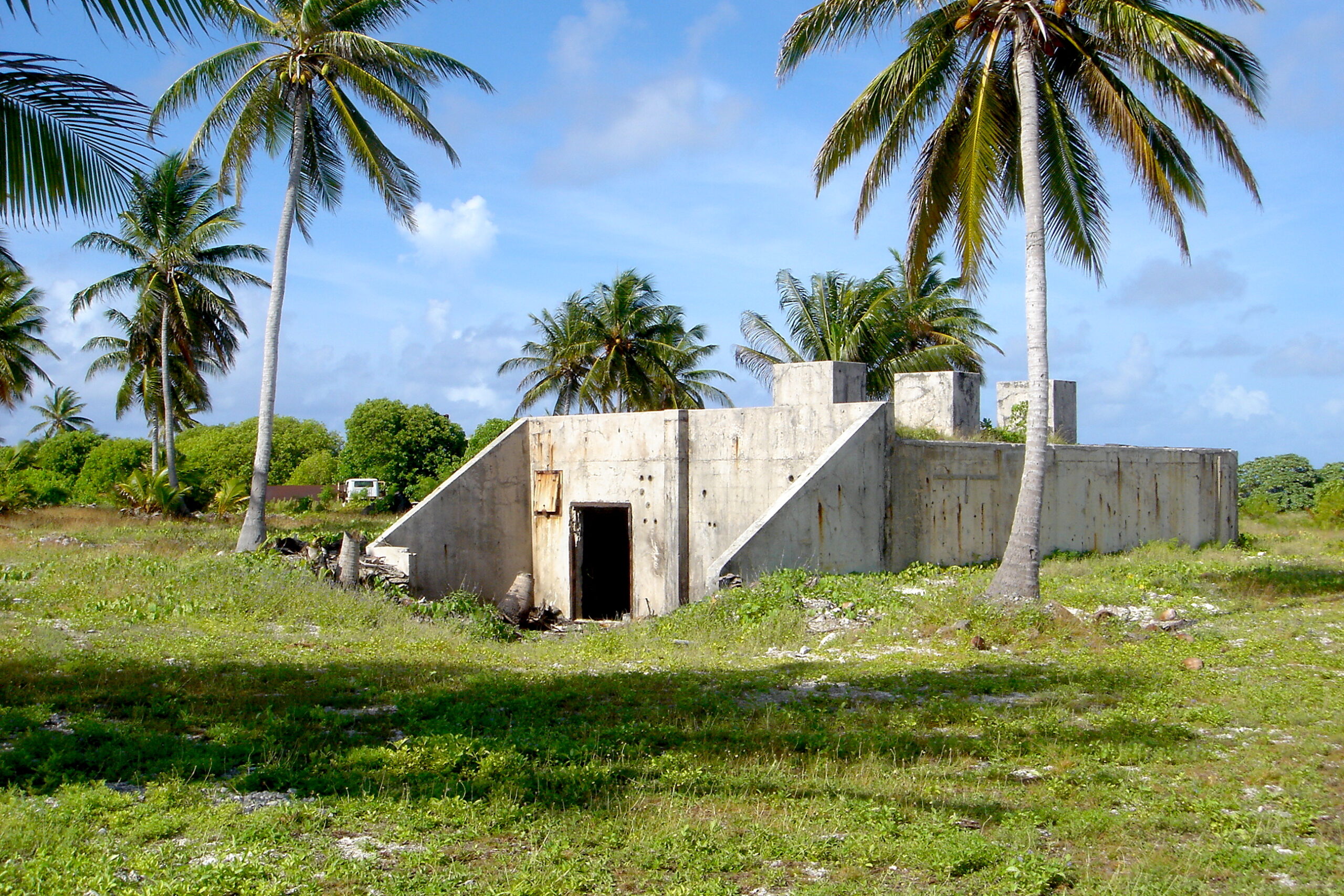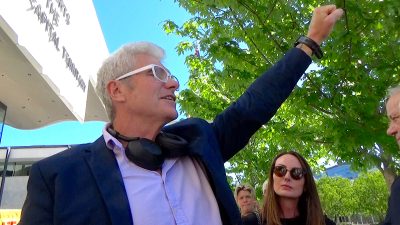ATOMIC BOMBINGS AT 75: John Pilger — Another Hiroshima is Coming — Unless We Stop It Now
by John Pilger, Consortium News:
 Hiroshima and Nagasaki were acts of premeditated mass murder unleashing a weapon of intrinsic criminality. It was justified by lies that form the bedrock of 21st century U.S. war propaganda, casting a new enemy, and target – China.
Hiroshima and Nagasaki were acts of premeditated mass murder unleashing a weapon of intrinsic criminality. It was justified by lies that form the bedrock of 21st century U.S. war propaganda, casting a new enemy, and target – China.
When I first went to Hiroshima in 1967, the shadow on the steps was still there. It was an almost perfect impression of a human being at ease: legs splayed, back bent, one hand by her side as she sat waiting for a bank to open.
At a quarter past eight on the morning of August 6, 1945, she and her silhouette were burned into the granite.
I stared at the shadow for an hour or more, then I walked down to the river where the survivors still lived in shanties.
I met a man called Yukio, whose chest was etched with the pattern of the shirt he was wearing when the atomic bomb was dropped.
He described a huge flash over the city, “a bluish light, something like an electrical short”, after which wind blew like a tornado and black rain fell. “I was thrown on the ground and noticed only the stalks of my flowers were left. Everything was still and quiet, and when I got up, there were people naked, not saying anything. Some of them had no skin or hair. I was certain I was dead.”
Nine years later, I returned to look for him and he was dead from leukemia.
“No Radioactivity in Hiroshima Ruin” said a New York Times headline on September 13, 1945, a classic of planted disinformation. “General Farrell,” reported William H. Lawrence, “denied categorically that [the atomic bomb] produced a dangerous, lingering radioactivity.”
Only one reporter, Wilfred Burchett, an Australian, had braved the perilous journey to Hiroshima in the immediate aftermath of the atomic bombing, in defiance of the Allied occupation authorities, which controlled the “press pack”.
“I write this as a warning to the world,” reported Burchett in the London Daily Express of September 5,1945. Sitting in the rubble with his Baby Hermes typewriter, he described hospital wards filled with people with no visible injuries who were dying from what he called “an atomic plague”.
For this, his press accreditation was withdrawn, he was pilloried and smeared. His witness to the truth was never forgiven.
The atomic bombing of Hiroshima and Nagasaki was an act of premeditated mass murder that unleashed a weapon of intrinsic criminality. It was justified by lies that form the bedrock of America’s war propaganda in the 21st century, casting a new enemy, and target – China.
During the 75 years since Hiroshima, the most enduring lie is that the atomic bomb was dropped to end the war in the Pacific and to save lives.
“Even without the atomic bombing attacks,” concluded the United States Strategic Bombing Survey of 1946, “air supremacy over Japan could have exerted sufficient pressure to bring about unconditional surrender and obviate the need for invasion. “Based on a detailed investigation of all the facts, and supported by the testimony of the surviving Japanese leaders involved, it is the Survey’s opinion that … Japan would have surrendered even if the atomic bombs had not been dropped, even if Russia had not entered the war [against Japan] and even if no invasion had been planned or contemplated.”
The National Archives in Washington contains documented Japanese peace overtures as early as 1943. None was pursued. A cable sent on May 5, 1945 by the German ambassador in Tokyo and intercepted by the U.S. made clear the Japanese were desperate to sue for peace, including “capitulation even if the terms were hard”. Nothing was done.
The U.S. Secretary of War, Henry Stimson, told President Truman he was “fearful” that the U.S. Air Force would have Japan so “bombed out” that the new weapon would not be able “to show its strength”. Stimson later admitted that “no effort was made, and none was seriously considered, to achieve surrender merely in order not to have to use the [atomic] bomb”.
Stimson’s foreign policy colleagues — looking ahead to the post-war era they were then shaping “in our image”, as Cold War planner George Kennan famously put it — made clear they were eager “to browbeat the Russians with the [atomic] bomb held rather ostentatiously on our hip”. General Leslie Groves, director of the Manhattan Project that made the atomic bomb, testified: “There was never any illusion on my part that Russia was our enemy, and that the project was conducted on that basis.”
The day after Hiroshima was obliterated, President Harry Truman voiced his satisfaction with the “overwhelming success” of “the experiment”.
The “experiment” continued long after the war was over. Between 1946 and 1958, the United States exploded 67 nuclear bombs in the Marshall Islands in the Pacific: the equivalent of more than one Hiroshima every day for 12 years.
The human and environmental consequences were catastrophic. During the filming of my documentary, The Coming War on China, I chartered a small aircraft and flew to Bikini Atoll in the Marshalls. It was here that the United States exploded the world’s first Hydrogen Bomb. It remains poisoned earth. My shoes registered “unsafe” on my Geiger counter. Palm trees stood in unworldly formations. There were no birds.
I trekked through the jungle to the concrete bunker where, at 6.45 on the morning of March 1, 1954, the button was pushed. The sun, which had risen, rose again and vaporised an entire island in the lagoon, leaving a vast black hole, which from the air is a menacing spectacle: a deathly void in a place of beauty.
The radioactive fall-out spread quickly and “unexpectedly”. The official history claims “the wind changed suddenly”. It was the first of many lies, as declassified documents and the victims’ testimony reveal.
Gene Curbow, a meteorologist assigned to monitor the test site, said, “They knew where the radioactive fall-out was going to go. Even on the day of the shot, they still had an opportunity to evacuate people, but [people] were not evacuated; I was not evacuated… The United States needed some guinea pigs to study what the effects of radiation would do.”
Read More @ ConsortiumNews.com





